 W
WSalomon Adler was a German painter of the Baroque period, active in Milan and Bergamo as a portrait painter. He was the mentor of Fra' Galgario. Born in Danzig (Gdańsk), died in Milan.
 W
WCosmas Damian Asam was a German painter and architect during the late Baroque period. Born in Benediktbeuern, he lived in Rome from 1711-13 to study at the Accademia di San Luca with Carlo Maratta. In 1713, Asam won the Academy's first prize for his drawing of Miracle of Saint Pio. In Germany, he worked with his brother Egid Quirin, a sculptor and stucco worker, on building and decorating entirely new churches or redesigning churches in the Baroque style. Their joint projects are often attributed to the "Asam Brothers". Cosmas Damian died in Munich.
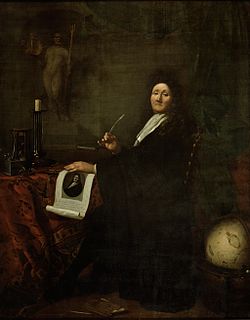 W
WLudolf Bakhuizen was a German-born Dutch painter, draughtsman, calligrapher and printmaker. He was the leading Dutch painter of maritime subjects after Willem van de Velde the Elder and Younger left for England in 1672. He also painted portraits of his family and circle of friends.
 W
WJohann Wilhelm Baur, Joan Guiliam Bouwer, or Bauer was a German engraver, etcher and miniature painter. He is famous for a series of illustrations of Ovid's Metamorphoses.
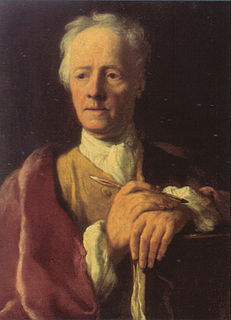 W
WFranz Joachim Beich was born at Ravensburg, on October 15, 1666. He was the son of Daniel Beich, a painter of little celebrity, from whom he received his instruction in the art.
 W
WWillem van Bemmel, or Guillaume, or Wilhelm von Bemmel, was a Dutch Golden Age landscape painter who moved to Germany.
 W
WThe Bentvueghels were a society of mostly Dutch and Flemish artists active in Rome from about 1620 to 1720. They are also known as the Schildersbent.
 W
WChristian Berentz or Bernetz (1658–1722) was a German Baroque painter.
 W
WAnna Katharina Block, was a German Baroque flower painter.
 W
WBenjamin Block or Blok (1631–1690) was a seventeenth-century German-Hungarian Baroque painter who married the flower painter Anna Katharina Block. He is known for his portrait paintings.
 W
WDaniel Blok or Daniel von Block (1580–1660) was a German Baroque painter.
 W
WJan Boeckhorst or Johann Bockhorst, was a German-born Flemish Baroque painter and draughtsman. He was a versatile artist who produced history paintings, genre scenes and portraits in a style influenced by the trio of leading Baroque painters in Antwerp Peter Paul Rubens, Anthony van Dyck and Jacob Jordaens. Boeckhorst also worked as a designer of cartoons for tapestries.
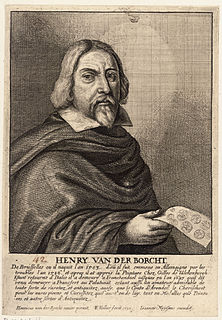 W
WHendrik van der Borcht the Elder or Hendrick van der Borcht the Elder (1583 - 26 July 1651 was a Flemish-German engraver and painter of portraits, still lifes of antiquities, flowers and fruit and landscapes. He was also an eminent antiquarian. He was mainly active in Germany to which his family had emigrated for religious reasons.
 W
WHendrik van der Borcht II was a German Baroque painter.
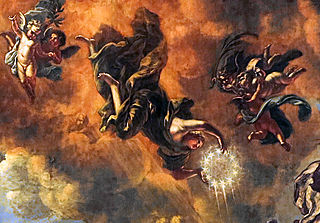 W
WDavid Klöcker Ehrenstråhl was a Swedish nobleman and portrait painter.
 W
WOttmar Elliger (1633–1679) was a Flemish Baroque flower painter.
 W
WGeorg Hainz, was a German Baroque painter.
 W
WJohann Oswald Harms was a German Baroque painter, engraver, and the first notable stage set designer of the Baroque. He worked for the Opernhaus am Taschenberg in Dresden, painting the ceiling and designing stage sets.
 W
WMichael Conrad Hirt was a German Baroque artist.
 W
WJohann Hulsman, or Hans Holsman, was a German Baroque painter active in Cologne.
 W
WSir Godfrey Kneller, 1st Baronet, was the leading portrait painter in England during the late 17th and early 18th centuries, and was court painter to English and British monarchs from Charles II to George I. His major works include The Chinese Convert ; a series of four portraits of Isaac Newton painted at various junctures of the latter's life; a series of ten reigning European monarchs, including King Louis XIV of France; over 40 "kit-cat portraits" of members of the Kit-Cat Club; and ten "beauties" of the court of William III, to match a similar series of ten of Charles II's mistresses painted by Kneller's predecessor as court painter, Sir Peter Lely.
 W
WJohn Zacharias (Zachary) Kneller, originally Johann Zacharias Kniller, was a German Baroque painter active in England, best known as the brother of Sir Godfrey Kneller. His youngest brother was organist Andreas Kneller.
 W
WNikolaus Knüpfer was a Dutch Golden Age painter.
 W
WJacob Christoph Le Blon, or Jakob Christoffel Le Blon, was a painter and engraver from Frankfurt who invented the system of three- and four-colour printing, using an RYB color model which segued into the modern CMYK system. He used the mezzotint method to engrave three or four metal plates to make prints with a wide range of colours. His methods helped form the foundation for modern colour printing.
 W
WJohann Liss was a leading German Baroque painter of the 17th century, active mainly in Venice.
 W
WJohann Carl Loth was a German Baroque painter who spent most of his life in Venice. His name is also rendered as Johann Karl, Karel and, in Italy, Carlotto or Carlo Lotti.
 W
WLouise Hollandine of the Palatinate was a painter and abbess. She was a daughter of Frederick V of the Palatinate and King of Bohemia, and Elizabeth Stuart.
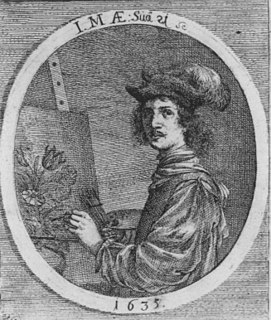 W
WJacob Marrel was a German still life painter active in Utrecht during the Dutch Golden Age.
 W
WJohann Ulrich Mayr, was a German Baroque painter.
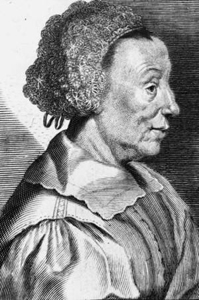 W
WSusanna Mayr, was a German Baroque painter.
 W
WMaria Sibylla Merian was a German-born naturalist and scientific illustrator, a descendant of the Frankfurt branch of the Swiss Merian family. Merian was one of the early European naturalists to observe insects directly.
 W
WJoseph Anton Merz was a German Baroque painter.
 W
WAntoine, or Anton Mirou, was a Flemish Baroque landscape painter of the Frankenthal school. He is known for his wooded and rocky landscapes and landscapes with populated villages. He was also a topographical draftsman whose views were widely disseminated through prints.
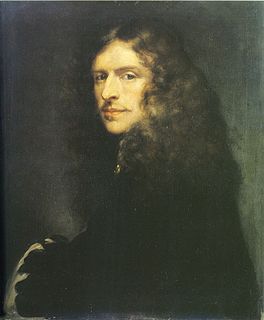 W
WJürgen Ovens, also known as Georg, or Jurriaen Ovens whilst in the Netherlands, was a portrait painter and art-dealer from North Frisia and, according to Arnold Houbraken, a pupil of Rembrandt. He is best known for his painting in the city hall of Amsterdam and paintings for the Dukes of Holstein-Gottorp for whom he worked for more than 30 years, also as an art dealer.
 W
WChristoph(er) Paudiß was a Bavarian Baroque painter and a student of Rembrandt van Rijn.
 W
WFranz Ludwig Raufft, was a German Baroque painter.
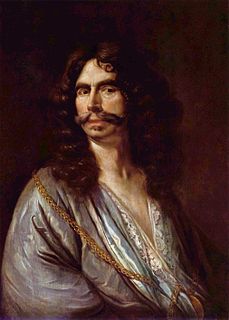 W
WJohann Heinrich Roos was a German Baroque era landscape painter and etcher.
 W
WJohann Melchior Roos, was a German Baroque painter.
 W
WPhilipp Peter Roos was a German Baroque painter, active in and near Rome from 1677 onward.
 W
WTheodor Roos was a German Baroque painter of historical scenes.
 W
WJoachim von Sandrart was a German Baroque art-historian and painter, active in Amsterdam during the Dutch Golden Age. He is most significant for his collection of biographies of Dutch and German artists the Teutsche Academie, published between 1675 and 1680.
 W
WMatthias Scheits was a German Baroque painter.
 W
WJohann Georg Melchior Schmidtner was a German Baroque painter.
 W
WPieter Schoubroeck, or Schaubroeck, was a German landscape painter of the Frankenthal school.
 W
WIsaak Soreau, was a German Baroque painter.
 W
WSebastian Stoskopff was an Alsatian painter. He is considered one of the most important German still life painters of his time. His works, which were rediscovered after 1930, portray goblets, cups and especially glasses. The reduction to a few objects, which is characteristic of early still life painting, can again be recognized in Stoskopff's painting. His chief works hang in his hometown of Strasbourg, but some of the world's most important art museums own paintings by Stoskopff as well.
 W
WJohann Georg Stuhr (1640–1721) was a German Baroque painter. He was born and died in Hamburg.
 W
WErnst Stuven was a German Baroque flower painter.
 W
WFranz Werner von Tamm (1658–1724) was a German Baroque painter who travelled to and worked in Italy.
 W
WJacob Ernst Thomann von Hagelstein, or Nestus Thomann was a German Baroque painter.
 W
WPhilip Tideman (1657–1705) was a Dutch Golden Age painter.
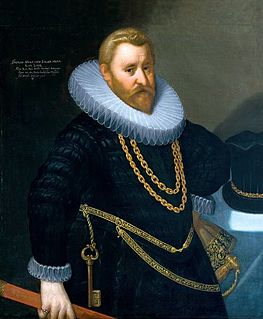 W
WSimon Peter Tilemann, was a German Baroque painter who was active Bremen, Kassel and Italy.
 W
WGeorg Anton Urlaub was a Baroque painter from Franconia. He was associated for part of his career with the court of the prince bishop of Würzburg and painted portraits and also many frescoes and altarpieces for churches in Lower Franconia.
 W
WMichael Leopold Lukas Willmann was a German painter. The Baroque artist became known as the "Silesian Rembrandt", "Silesian Apelles" or "Silesian Raphael" and has been called the greatest Silesian painter of the baroque period.
 W
WFranz Wulfhagen was a German Baroque painter and engraver.
 W
WJohann Baptist Zimmermann was a German painter and a prime stucco plasterer during the Baroque.